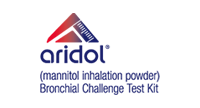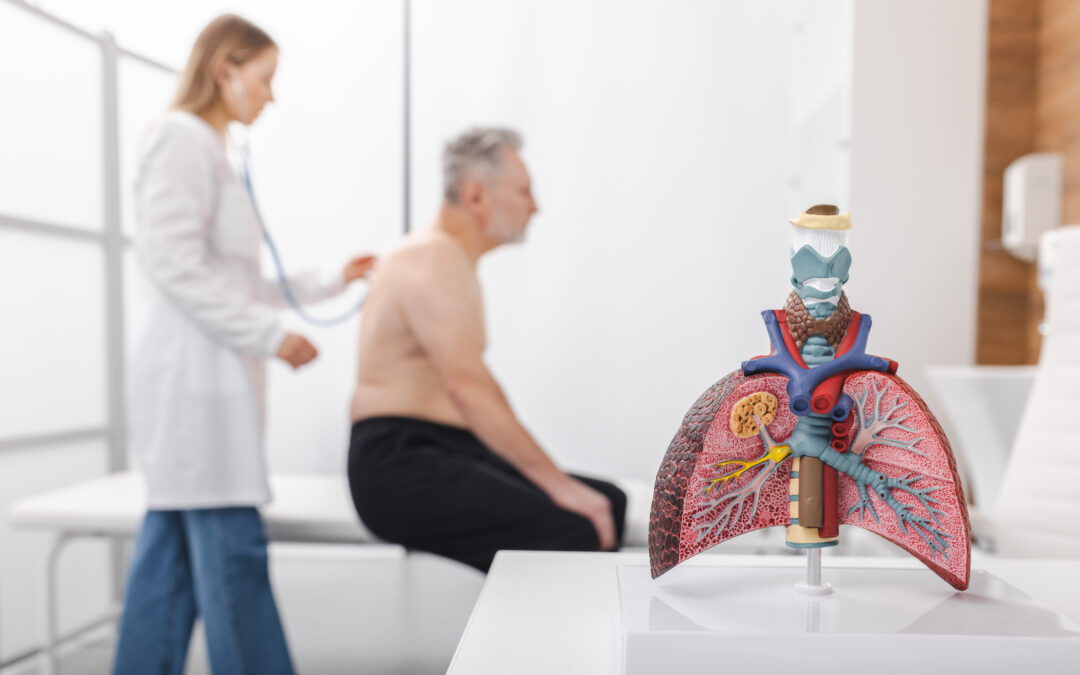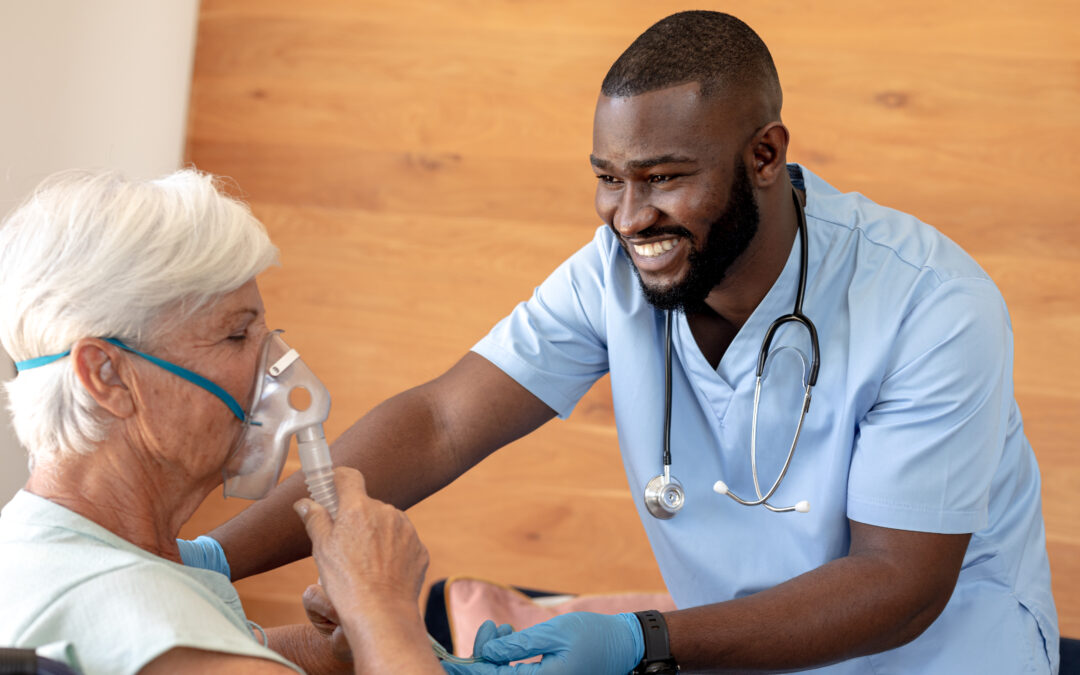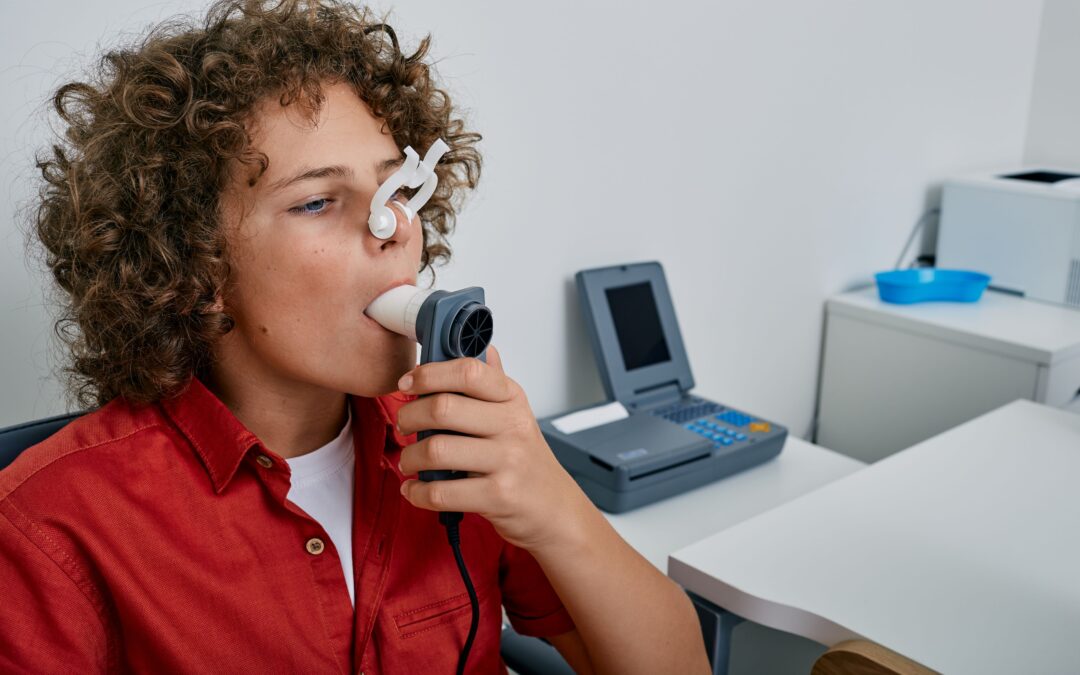Author: Holy Wilson, RPFT
When I was asked if I would like to write for this blog I had just moved from the U.S. to southern Portugal. It was the perfect time to put my journey into words of how I transitioned from working as a Pulmonary Function Technologist in hospitals to working remotely on the industry side of respiratory diagnostics from my home in Portugal. This is my story.
At the age of 16 I got a job working weekends in a Respiratory Therapy Department as an Equipment Tech. My long-term plan was to become a veterinarian. I was hopeful this would prepare me for veterinary school, and it paid higher than minimum wage. Veterinary school didn’t happen, but the Equipment Tech job quickly led me to the bedside. I learned how to perform pulse oximetry, peak flow, and titrate oxygen. In the 1980’s pulse oximeters were too large and costly to have in each room and the Wright peak flow meters were not disposable, so I went from room to room doing spot checks and charting the results. By 1990 the director of the PFT Lab asked if I wanted to learn how to perform PFT’s, and that’s how it all began. In the years that followed my mentors took me under their wings and taught me everything they knew (which was a lot) about pulmonary function studies.
By 1992 I had received the CPFT credential and in 1994 I was offered a job at Washington University School of Medicine. This was a large PFT Lab with a broad scope of service. I learned too many things to list here, but this opportunity was pivotal for what was to come. In 1998, I moved to Sydney, Australia with my husband who had taken a job with IBM Global Services. Soon, I found a job in a Respiratory Investigation Unit at the Royal Prince Alfred Hospital, working under the guidance of Dr. Sandra Anderson. Dr. Anderson is a world-renowned scientist in the field of asthma, whose research and expertise brought us the mannitol challenge test.
In 2001 we adventured to Dublin, Ireland where I worked for a pediatric pulmonologist, and in 2002 made my way into Gregg Ruppel’s lab at St Louis University Hospital. Working with Gregg Ruppel, the author of The Manual of Pulmonary Function Testing and dozens of other publications, was a dream come true. In 2013 Gregg retired and I filled the leadership role that was left vacant. I started doing more teaching and learned that every time I taught someone about PFT’s, I would learn something new! I managed a good-sized lab, a few employees and kept things afloat, but the biggest challenge was the Covid-19 outbreak. Learning how to effectively manage a PFT lab during the onset of Covid-19 was one of the most difficult things I had ever done. I was ready for a different kind of work.
Prior to the pandemic, my husband and I visited Panama to learn more about early retirement abroad. When we returned, I decided to explore the possibility of becoming a digital nomad. I enjoyed being productive and didn’t feel ready to hang up my PFT credentials just yet. But how in the world does a PFT technologist leave the clinical setting to work remotely?
I visited the AARConnect Diagnostics forum to ask the question. I got several helpful responses, mostly about the option of Over-Reading PFT data for Clinical Research Trials. Little did I know that within 8 months I would have an unexpected job offer and would make the transition to the industry side of respiratory diagnostics and clinical research trials.
This opportunity brought a brand-new perspective. I had performed testing for research purposes, worked with monitors, and research site coordinators, but now I was in a whole new environment. I needed to learn the language of clinical research, new standard operating procedures, best practices, and how to work within project management teams. It was difficult and I had a lot of self-doubt. I had to learn that it was okay to be a beginner all over again. I had to build my confidence and be patient with myself, just like those many years before, when I was learning how to coach patients and navigate PFT software.
In my current role I help to maintain the integrity of PFT data for clinical research from hundreds of clinical sites all over the world. I Over-Read the PFT data for quality assurance and give feedback when a site needs to improve or do something different to meet the requirements of the study. This requires patience and good communication. There can be language barriers, but with a little persistence and patience I can give someone what so many others have given to me. The knowledge of pulmonary functions.
And the rewards are great! Where else can a Pulmonary Function Technologist start the day on a call with Italy and end the day with a training presentation for a site in Australia? Today I can share what I have learned on a global scale. When you are open to endless possibilities, there is no limit to what you can do.
Author: Holy Wilson, RPFT
H&E Consulting contracted by Vitalograph








